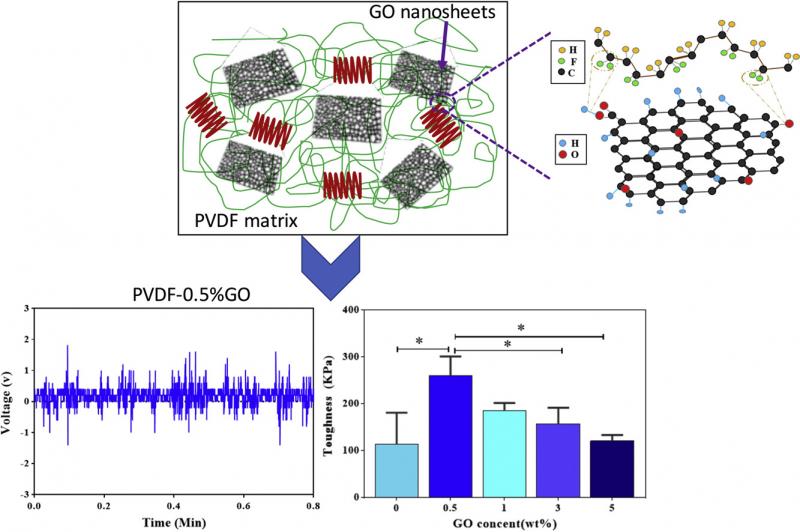- English
- فارسی
Development of three-dimensional piezoelectric polyvinylidene fluoride-graphene oxide scaffold by non-solvent induced phase separation method for nerve tissue engineering
Nadia Abzan, Mahshid Kharaziha, Sheyda Labbaf
In this work, non-solvent induced phase separation method was applied to develop polyvinylidene fluoride (PVDF)/graphene oxide (GO) scaffold for nerve tissue engineering. Furthermore, the effects of GO concentration (0, 0.5, 1, 3 and 5 wt%) on the electrical, mechanical, physical and biological properties of scaffolds were also evaluated. Results demonstrated that, incorporation of GO nanosheets in the PVDF matrix decreased water contact angle, while enhanced the hydrophilicity, water absorption and water flux of the scaffolds. Moreover, mechanical properties of the nanocomposite scaffolds improved in the presence of GO nanosheets. Significantly, increasing GO content up to 3 wt% enhanced tensile modulus and strength of PVDF scaffold from 8.1 ± 1.4 and 0.8 ± 0.2 MPa to 17.0 ± 3.7 and 1.4 ± 0.4 MPa, respectively. Incorporation of GO nanosheets into the PVDF scaffold simultaneously enhanced β phase fraction, piezoelectricity and electrical conductivity of all nanocomposite scaffolds. Furthermore, PVDF-GO scaffolds significantly promoted cell proliferation, compared to PVDF scaffold, depending on the GO content. Finally, PVDF-GO scaffold could easily be converted in to a nerve guidance conduit with 4 internal longitudinally aligned channels making it appropriate for the nerve regeneration applications.

